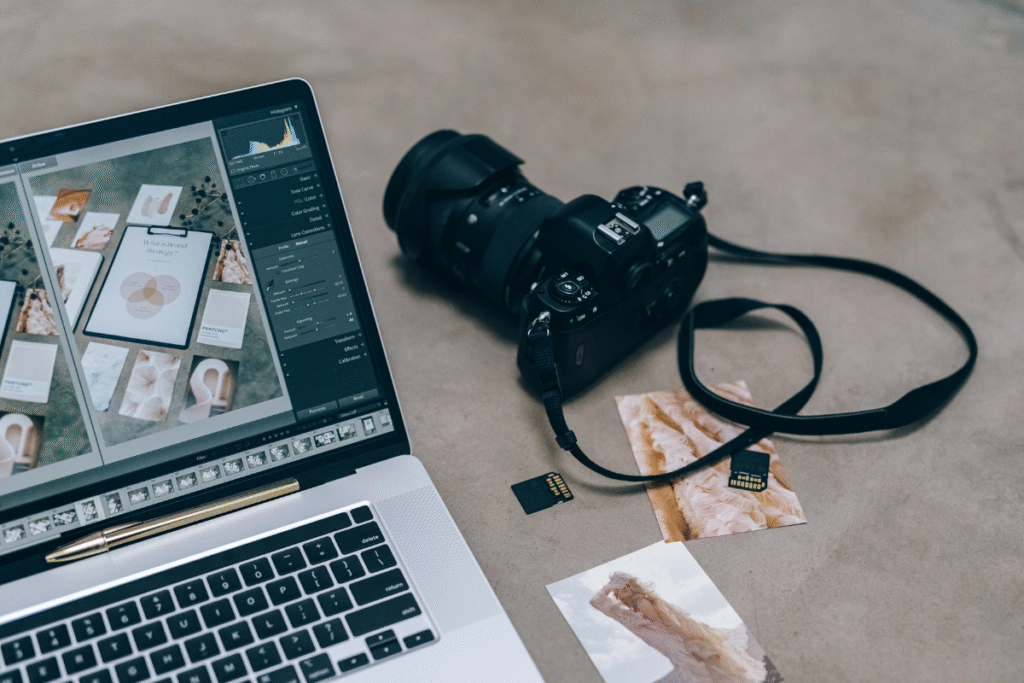Have you ever taken a picture that appears uninteresting as compared to what you saw in the real world? Good equipment is not all you require; you require knowing how to use it. Knowing how to work your DSLR cameras settings would turn your mediocre images into marvelous ones, whether you are a beginner or a professional photographer.
This tutorial will explain all the essential settings that any photographer should be conversant with: aperture, shutter speed, ISO and white balance. We will also explain what types of DSLR cameras there are, budget-friendly, DSLR cameras available in the market, the top DSLR cameras in 2025, DSLR benefits, and practical tips to capture the best shots. To start with, we can find out why it is so essential to get these basics right.
Why Settings Matter in DSLR Cameras
DSLR cameras have strength in that they give you full control in the manual. Unlike a smartphone, which is in an auto-mode, a DSLR does not limit you to these settings, which can be adjusted to the circumstances and to one of your creative intentions. Control is the difference between a snapshot and the appearance of a professional photo.
Shooting a sunset, as an example, balances out with shooting a fast-moving athlete. You can avoid overexposure, motion blur, or grain with the art of aperture, shutter speed and ISO. The 2025 best DSLR cameras also remain in the hands of the photographer.
Pro Tip: Learn to practice in manual mode rather than auto. It is frightening but it is the quickest way of becoming a better individual.
Having the importance of settings established, now is the time to get down to basics that every beginner should know.
Essential Settings to Master in DSLR Cameras
The changes to be made have been enlisted below:
- The aperture (f-stop): This is the central point of some physical devices, which serves to limit the light entering into the image plane.
- If you use a small number for the f-stops (f/1.8), then you might get a clear master background. A big f-number (e.g., f/16) keeps all this sharp.
- Shutter Speed—It is the amount of time that the sensor is subjected to light.
- Fast speeds freeze motion (great for sports).
- Low motion rate will produce motion blur (excels at night).
- ISO—Measures sensitivity to light.
- Low ISO (100-400) gives cleaner images.
- The high ISO works in low light with the possibility of noise.
- White Balance—Controls colors to look natural under different light.
- Focus Modes—The mode (single point, continuous, etc.) should be chosen to be sure that the subjects are sharp.
A bit of learning, you realize that even cheap DSLR cameras can produce high-quality results. It does not necessarily imply expensive equipment—it is making the most of what you have.
Accessories for DSLR Cameras to Improve Performance
The appropriate tools may elevate your work to a different level than settings. Must‑haves include:
- Tripods: Tripods are necessary to give the camera stability, particularly in times of low light.
- External Flashes: Useful for indoor events or poorly lit scenes.
- Prime Lenses: Are sharper and provide more creative options than kit lenses.
- Filters (polarizing/ND): Regulate the exposure and reflections.
- Extra Memory Cards & Batteries: Prevent interruptions during shooting.
Accessories can be even more valuable than good equipment to hobbyists who are searching the world of low-end DSLR cameras. A tripod or inexpensive lens upgrade can be added immediately to improve your results.
Tips on How to Take the Best Photos
Apply these settings and accessories in real‑world scenarios:
- The aim of portraits is a big aperture (f/1.8-f/2.8) in order to produce shallowness of focus.
- Landscapes employ very shallow apertures (f/11 or f/16) that leave the entire picture in focus.
Sports and Action
At least a 1/500 s shutter speed to snap motion.
- Night photography: Set the ISO number to 1600 and 3200 and adjust to get this effect, then put a tripod to reduce the blur.
- Travel shots: Full-frame cameras feature the highest image quality; however, to save money and space, compact entry-level DSLRs cost less and can be transported.
- Novices: Aperture priority (A or Av) is a good beginning mode due to the fact that it offers both artisticness and simplicity at the same time.
Quick Tips to Achieve Perfect DSLR Shots
Learn how to master the exposure triangle aperture, shutter speed and the ISO to achieve desired results.
- Balance the white to your lights.
- Invest in core accessories like a tripod and a prime lens.
- Auto mode is off—you can be a lot more in the manual.
- Train; photography is improved by experiment.
Pro Tip: Keep a photo journal. Record your settings and your favorites. Reviewing what you have accomplished can help you fine-tune methods and what works in different situations.
Conclusion
The last option used by photographers who desire absolute creativity is the DSLRs. Being able to adjust both aperture, shutter speed, ISO and white balance, you will have the ability to make more impressive and sharper images than what most smartphones can. The best thing is to learn and apply the characteristics of the camera when purchasing both expensive and inexpensive DSLRs.
El Corte Ingles has a tremendous range of DSLR cameras and accessories depending on the level to upgrade those who are willing. Right equipment and application of knowledge can make your pictures more than good.
For more such informative blogs, visit TheVougeClub
